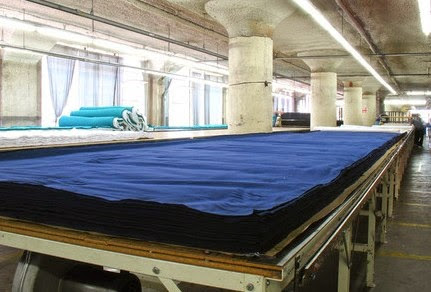Factors Considered for Ply Height Determination in Fabric Spreading Before Cutting in the Garments Industry
Fabric Spreading:
The process of unwinding large rolls of fabric onto long, wide tables in preparation for cutting each piece of garment is called fabric spreading. It is a preparatory operation for cutting and consists of laying plies of cloth one on top of the other in a predetermined direction and relationship between the right and wrong sides of the cloth. Multiple layers lie together in the bulk cutting. If we do not control height, this creates a problem in the cutting process. In this article, we discuss Factors Considered for Ply Height Determination in Fabric Spreading before cutting in the garments industry.
During spreading the number of layers should not be more than three hundred which is common but the thickness of the fabric is an important factor in that case, for instance, if the thickness is more then the above phenomena would not be valid as well as if the cutting knife height is less then the above statement will also not be correct.

Factors Considered for Ply Height Determination in Fabric Spreading
As you have read about fabric spreading in the previous text, now let us take a brief look at factors that influence the lay height as well:
- Thickness of the fabric: If the thickness of the fabric is higher, then the number of plies will obviously be less.
- Cutting knife length: Lay height should not be more than 70% of the cutting knife height if it is a straight knife cutting machine and in the case of a round knife cutting instrument it should not exceed 40% of the blade diameter.
- The volume of production: For bulk production, the number of plies is greater and the lay height is greater.
- Nature of the fabric: In case of the same number of plies, cotton fabric can be cut but synthetic fabric can not be cut. Non-denim woven fabric can be 5 inches but denim fabric can be 3 inches.
- You may love to read: Fabric Spreading Process in the Garments Industry
- 10 Requirements of Fabric Spreading in Garments Industry
